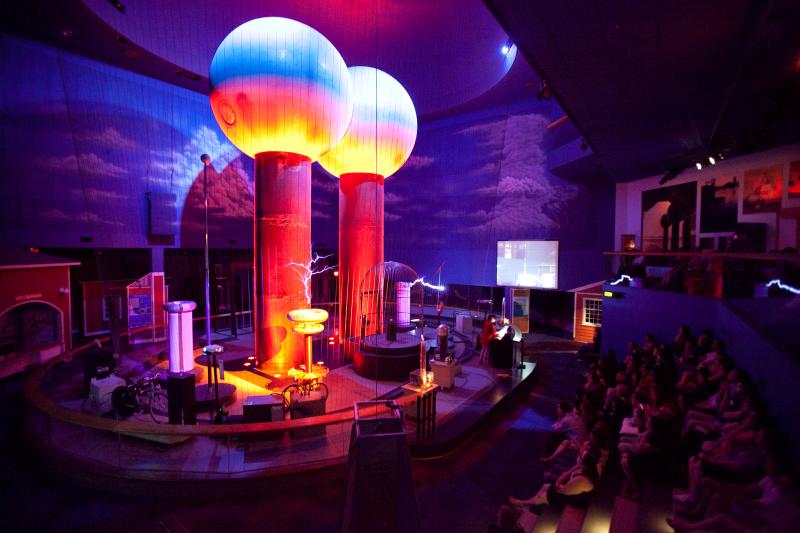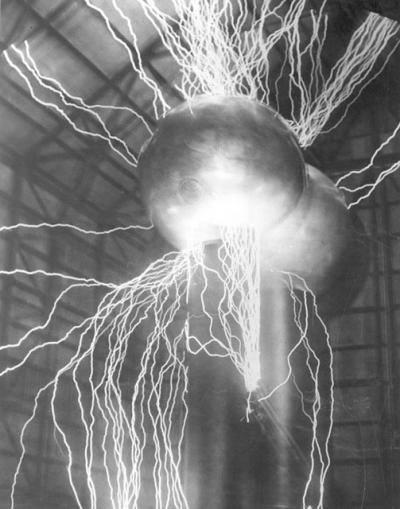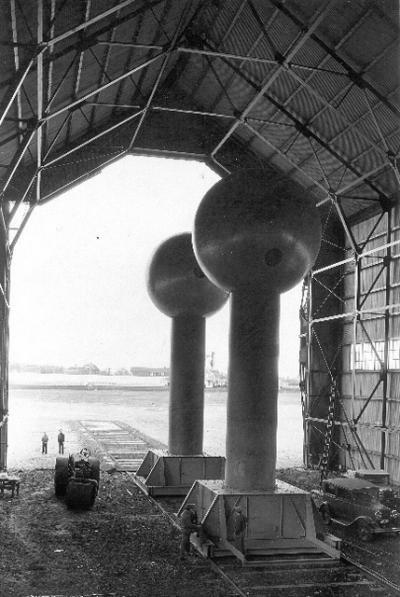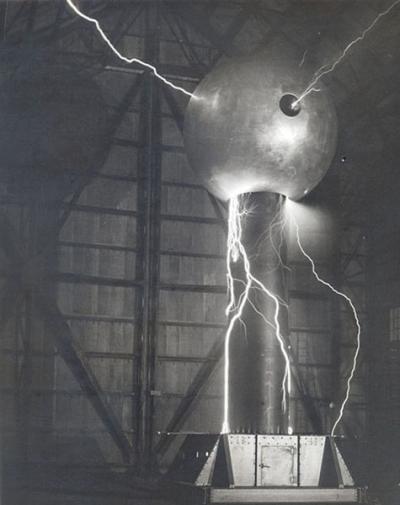Spark of genius: Dartmouth’s lightning generator
One of the most popular exhibits at the Museum of Science in Boston is, without a doubt, the lightning show — made possible by a giant Van de Graaff generator that creates massive sparks of electricity.
But many residents might not be aware that the huge generator — the largest of its kind in the world — was originally built right here in Dartmouth.
Alabama native and assistant physics professor at MIT Robert Van de Graaff headed up the project out of an old airship hangar at the Round Hill scientific research station in 1932.
According to historian Barbara Fortin Bedell in her 2003 book “Colonel Edward Howland Robinson Green and the world he created at Round Hill,” his goal was to create a generator capable of producing 10 million volts.
By 1930, scientists had just begun smashing particles together for research purposes. But higher voltage was needed for further experimentation.
So Van de Graaff took a previous generator design and writ it large. Bedell states that the famous machine was built from two 15-foot spheres of aluminum weighing one and a half tons each.
One of the spheres had a small lab inside, and both were mounted on two 25-foot columns of textolite, an insulating material made of sheets of paper or fabric coated in resin.
The first test of the new device was conducted in front of a crowd of scientists, reporters, and photographers in the hangar on November 28, 1933 and saw the machine generate seven million volts — several times the one to two million volts used in the museum’s lightning show.
According to Bedell, one witness — the wife of one of the scientists — described the scene: “In the galvanized atmosphere, the hair of watchers stood straight up, their elbows tingled, their fingertips glowed...The air was pungent with ozone. Blinding flashes and the crackling sound was like the rapid firing of high powered cannon.”
Scientists used the generator in early atom smashing and x-ray experiments.
After Colonel Green’s death, the device was moved up to Cambridge in 1937, eventually settling at the Museum of Science for education purposes when its research days were over.
Here are some electrifying images of the generator in use at the Round Hill facility from the MIT archives.
Thanks to Bob Harding of the Dartmouth Historical and Arts Society for contributing his historical knowledge and resources to this article.
















